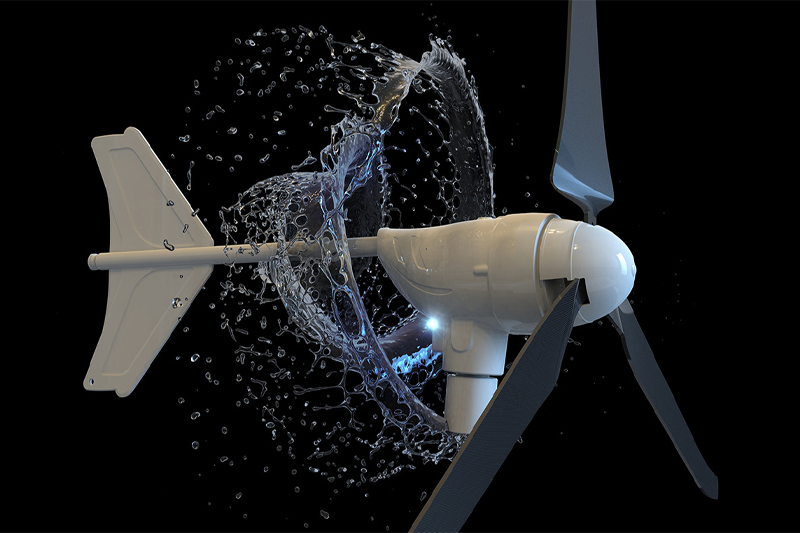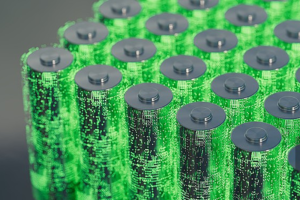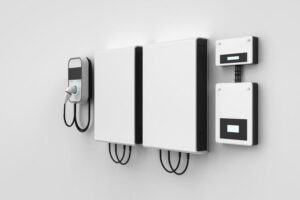Introduction:
As a clean and renewable energy source, wind power generation is being used more and more widely around the world. As the core of this technology, wind turbines undertake the important mission of converting wind energy into electrical energy. So, how do wind turbines achieve this conversion process? This article will unveil the mystery of wind turbine power generation and take you to an in-depth understanding of the operating principle of this clean energy technology.

1. Basic structure of wind turbines
To understand how wind turbines generate electricity, we first need to understand its basic structure. A typical wind turbine is mainly composed of the following parts:
Blades: Usually composed of 3 blades, it is a key component for capturing wind energy.
Hub: The central part that connects the blades and the main shaft.
Nacelle: Contains core components such as generators and gearboxes.
Tower: A tall structure that supports the entire turbine.
Variable pitch system: Adjust the blade angle to adapt to different wind speeds.
Yaw system: Adjust the direction of the nacelle so that the turbine always faces the direction of the wind.
The coordinated work of these components enables wind turbines to efficiently convert wind energy into electrical energy.
2. The basic principles of wind turbine power generation
How do wind turbines generate electricity? The answer to this question involves several key physical principles:
Aerodynamic lift principle
The design of wind turbine blades is based on the principle of aircraft wings. When wind blows over the blades, a pressure difference is generated between the upper and lower surfaces of the blades, forming lift. This lift drives the blades to rotate, thereby driving the entire turbine system to operate.
Energy conversion principle
The working process of a wind turbine is actually an energy conversion process:
Wind energy → mechanical energy → electrical energy
Wind energy is first converted into the rotational kinetic energy (mechanical energy) of the blades, and then the mechanical energy is converted into electrical energy through a generator.
Electromagnetic induction principle
The working principle of the generator is based on Faraday’s law of electromagnetic induction. When the rotor of the turbine rotates in the magnetic field, an induced current is generated in the coil, thereby generating electrical energy.
3. Detailed process of wind turbine power generation
Now, let’s take a closer look at how wind turbines generate electricity. This process can be divided into the following steps:
Wind energy capture
When wind blows through the turbine, the blades begin to rotate due to aerodynamic lift. The design of the blades has been carefully optimized to maintain high efficiency at different wind speeds. The variable pitch system adjusts the angle of the blades in real time according to the wind speed to ensure the best energy capture effect.
Mechanical transmission
The rotation of the blades drives the hub and the main shaft to rotate. The main shaft is usually connected to a gearbox to convert the low-speed and high-torque of the blades into the high-speed and low-torque required by the generator. Some modern wind turbines use direct drive technology, eliminating the gearbox and directly connecting the main shaft to the generator.
Power generation process
The rotating main shaft drives the generator rotor to rotate. The stator coil inside the generator is surrounded by a fixed magnetic field. According to the principle of electromagnetic induction, when the rotor rotates in the magnetic field, an alternating current is generated in the stator coil, thereby generating electrical energy.
Power output
The generated electrical energy is boosted by a transformer and transmitted to the power grid through transmission lines. In this process, voltage and frequency regulation is also required to ensure that the output power meets the grid standards.
Control and monitoring
The entire power generation process is managed by a complex control system. This system monitors parameters such as wind speed, wind direction, and generator temperature in real time, and adjusts the operating status of the turbine accordingly to ensure safe and efficient power generation.
4. Factors affecting the power generation efficiency of wind turbines
After understanding how wind turbines generate electricity, we also need to know what factors affect their power generation efficiency:
Wind speed
Wind speed is the most critical factor affecting power generation efficiency. Generally speaking, wind turbines require at least 3-5 meters/second wind speed to start power generation, and achieve optimal power generation efficiency at 10-15 meters/second.
Blade design
The length, shape and material of the blades all affect power generation efficiency. Longer blades can capture more wind energy, but also increase structural loads. Modern blade designs use composite materials, taking into account both lightness and strength.
Turbine location
The installation location of the turbine directly affects the wind energy it receives. Generally, areas with abundant wind resources such as coastal areas, mountains or open plains are ideal locations.
Turbine size
Large turbines are generally more efficient than small turbines because they can access higher altitude and faster wind speeds.
Maintenance status
Regular maintenance is essential to keep turbines running efficiently. Timely replacement of worn parts and adjustment of system parameters can significantly improve power generation efficiency.
V. The latest developments in wind turbine power generation technology
How wind turbines generate electricity is a question that is constantly being updated with technological advances. Here are some of the latest technological developments:
Offshore wind power
Offshore wind turbines are becoming a development trend. Compared with onshore, offshore wind resources are more abundant, more stable, and not restricted by land. The latest offshore wind power technology includes floating wind turbines, which can be installed in deeper waters.
Intelligent control system
The application of artificial intelligence and big data technology makes the control system of wind turbines more intelligent. These systems can predict wind conditions based on weather forecasts and historical data, adjust the status of turbines in advance, and maximize power generation efficiency.
Application of new materials
The application of lightweight and high-strength materials such as carbon fiber allows turbine blades to be made longer and capture more wind energy. At the same time, new materials also improve the durability and reliability of turbines.
Vertical axis wind turbines
Although the current mainstream is still horizontal axis wind turbines, the vertical axis design shows unique advantages in certain specific scenarios, such as urban environments and small distributed power generation.
High-altitude wind energy development
Some innovative companies are exploring technologies that use high-altitude wind energy, such as kite power generation and aerial turbines, which are expected to capture stronger and more stable high-altitude air currents.
With the continuous advancement of renewable energy technology, we are getting closer and closer to the goal of sustainable development. Every rotation of the wind turbine is creating a cleaner and greener future for us.




